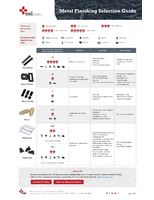Robotic System automatically compensates for tool wear.
Press Release Summary:
Suited for single-pass bore finishing operations, robotic system automates bore finishing process and monitors all progressively sized diamond tools individually in order to make necessary size compensations due to tool wear. Machine incorporates central robotic arm to pick-up and move incoming parts from machine to machine. System also includes gauge unit, system controller, and unit designed for adjusting diametrical size of diamond tools.
Original Press Release:
New Robotic Tool Compensation System Automates Engis Bore Finishing Process
WHEELING, IL, USA - A new robotic process that automatically compensates for tool wear is bringing significant labor cost savings, higher yields and increased throughput to single-pass bore finishing operations. The system's capabilities, features and benefits will be unveiled by Engis Corporation at IMTS 2004 in Booth #B7422.
"This is a highly versatile system that takes the efficiencies of single-pass bore finishing to the next level," explained Ken Werner, vice president of sales and marketing at Engis. "This system allows the precision bore finishing operations to run with virtually no labor costs". Another option that is available involves the integration of other machining operations into the automated system for compounded cost savings.
"The key to success of this system is the ability to monitor all of the progressively sized diamond tools individually and automatically make any necessary size compensations due to eventual tool wear."
Here's how it works. A central robotic arm picks up incoming parts to be finished and places them into fixtures on the Engis single-pass bore finishing machine. Engis machines are available in a variety of standard and custom models, typically featuring four to six spindles outfitted with high-precision diamond-plated tools. The parts are finished by a series of single passes through the bore. The robotic arm then picks the parts from the machine and swings them over to either another finishing station, such as an OD grinding operation, or to a gauging unit, where it is measured for tolerance before being moved to the final unload station. Based on feedback from the gauge unit, and also after a pre-set number of cycles, the system controller tells the robot to go into what is called a "check" mode. During this check mode, the robotic arm picks parts from each position on the bore finishing machine's index table and drops these parts onto a gauging device mounted directly to the machine itself. Each part from each of the four-to-six spindle stations on the machine is measured. The robot then changes its end of arm tooling to a unit specially designed for adjusting the diametrical size of the diamond tools, and proceeds to make the required adjustments based on the information calculated through the gauging systems computer.
While there are specialized auto comp tool packages that utilize internal drawbars and servo-driven adjustment mechanisms through the spindles, Werner stated that the robotic approach both simplifies and brings added value to the task.
"With this new multi-functional approach to auto comping, you get the added versatility and benefits that come from incorporating additional finishing and inspection stations into a totally automated, integrated machining cell."
Engis Corporation, based in Wheeling, IL, is the world leader in developing single-pass bore finishing technologies and systems. For more information, contact Robert Marvin at 847-808-9400, or send an e-mail to sales@engis.com. On the web: www.engis.com.




